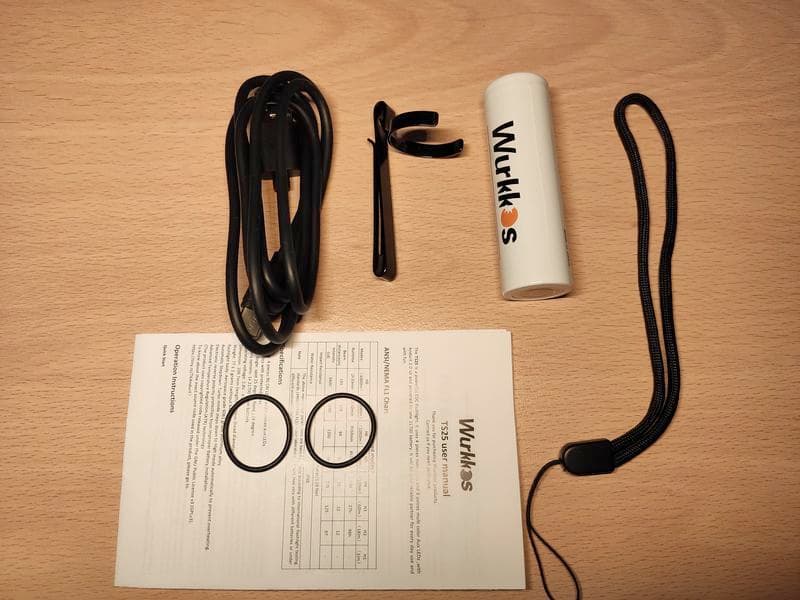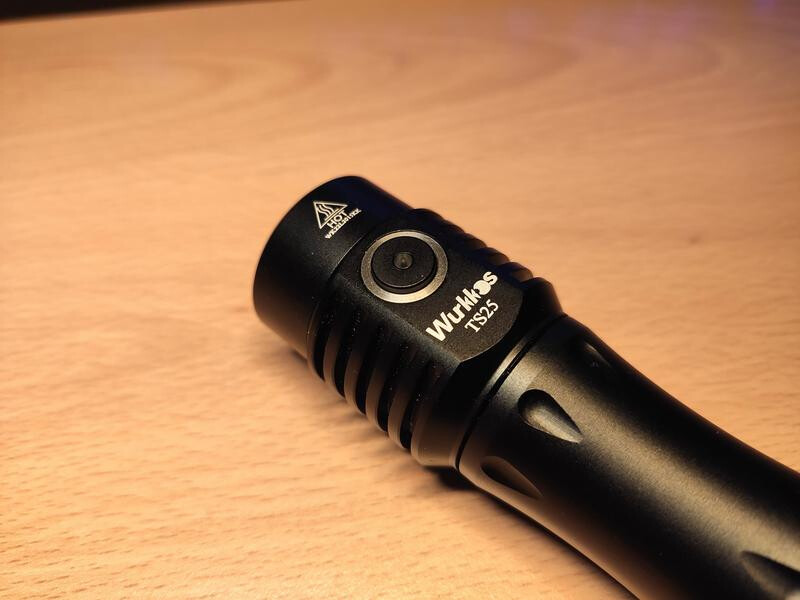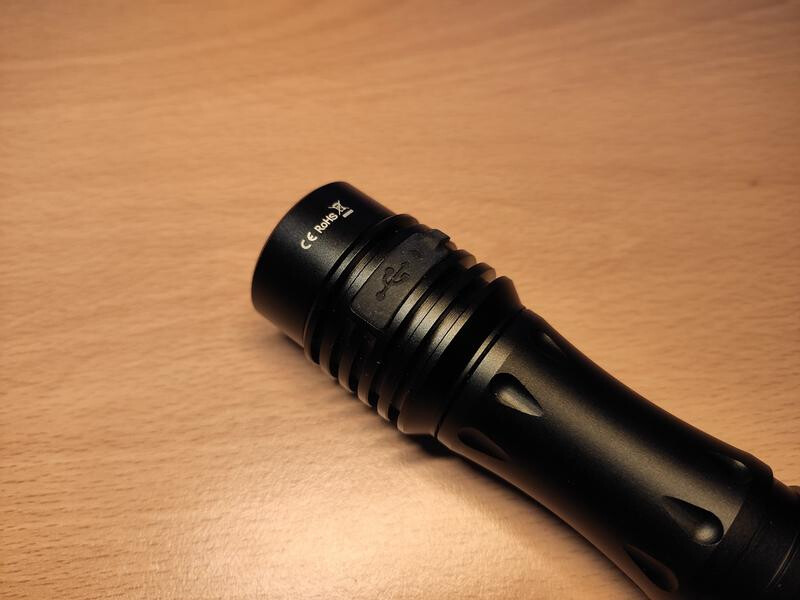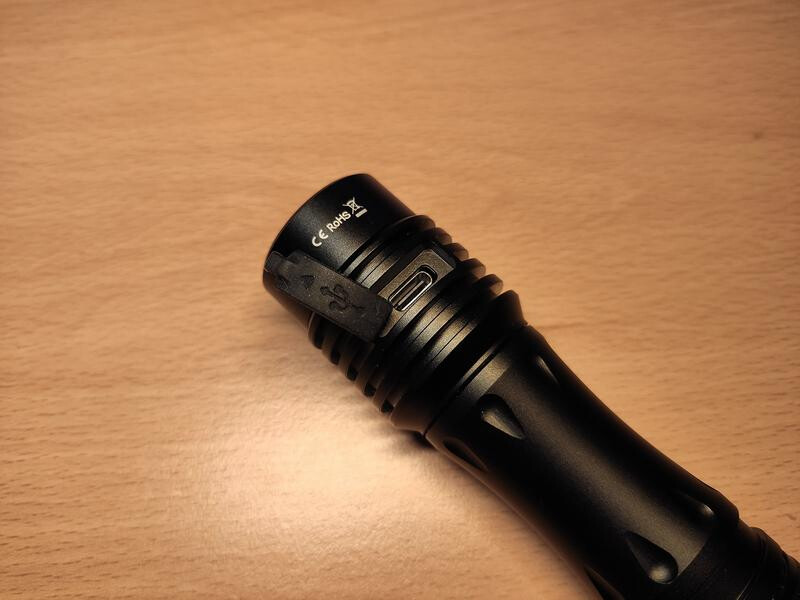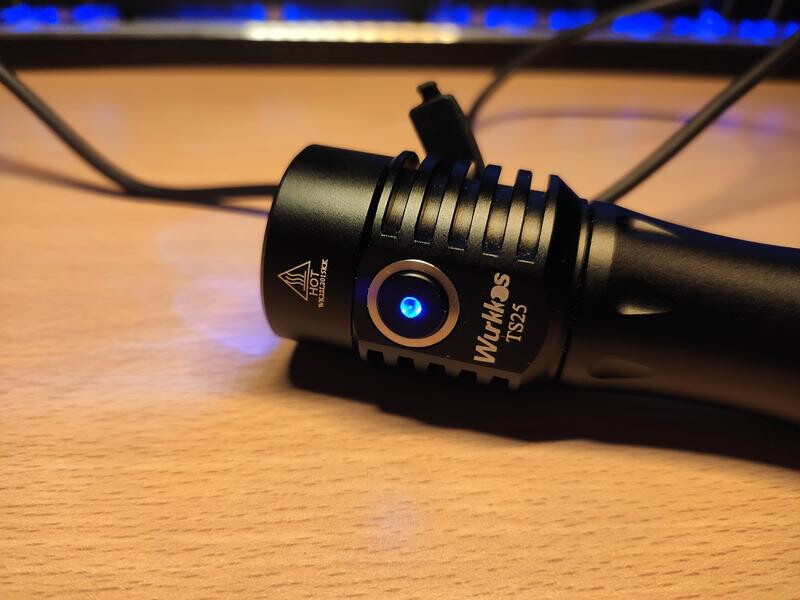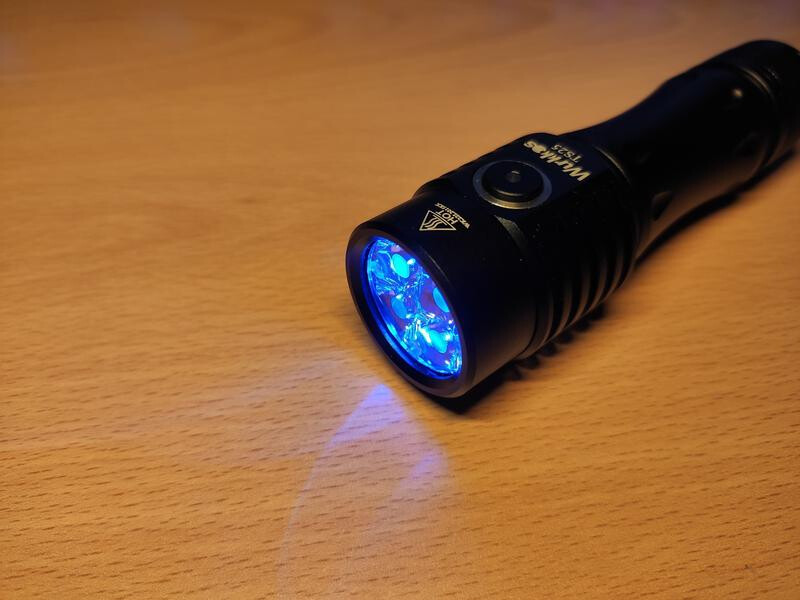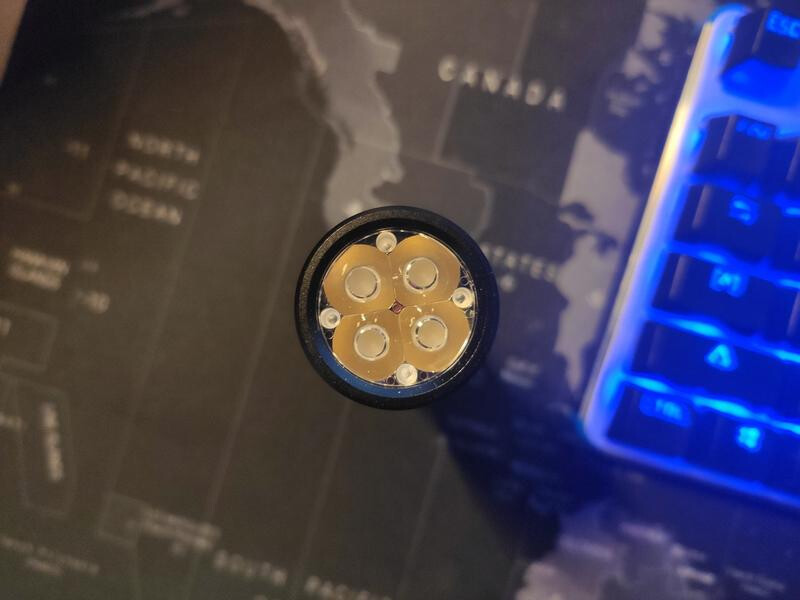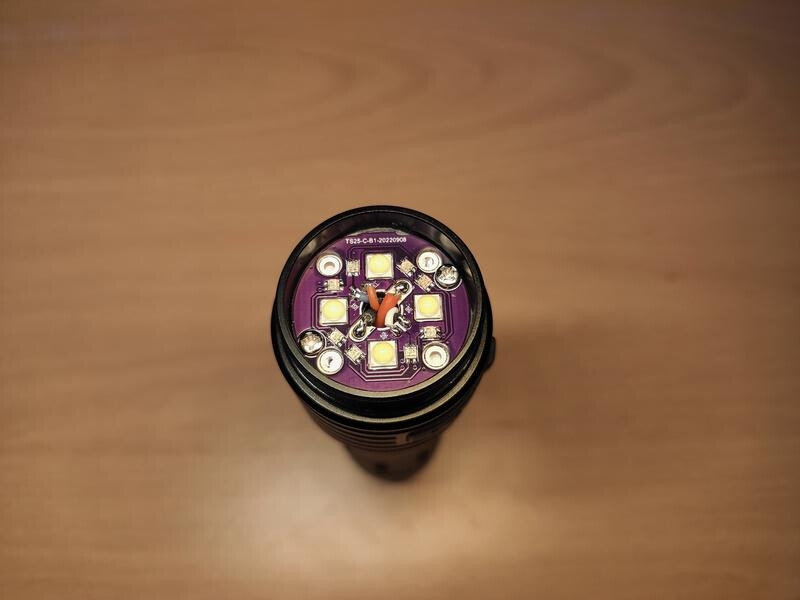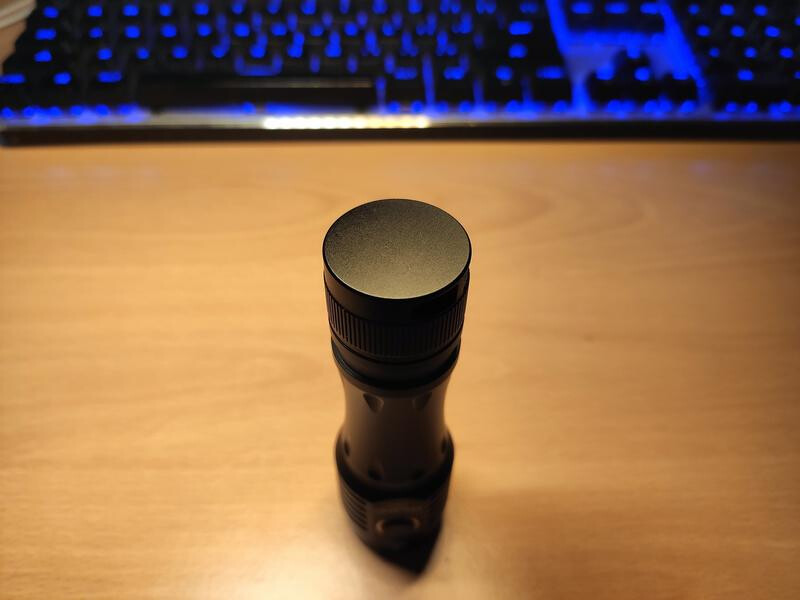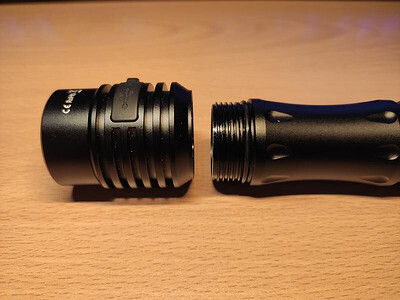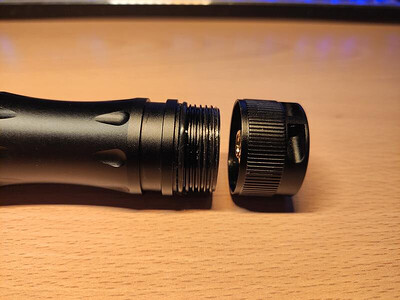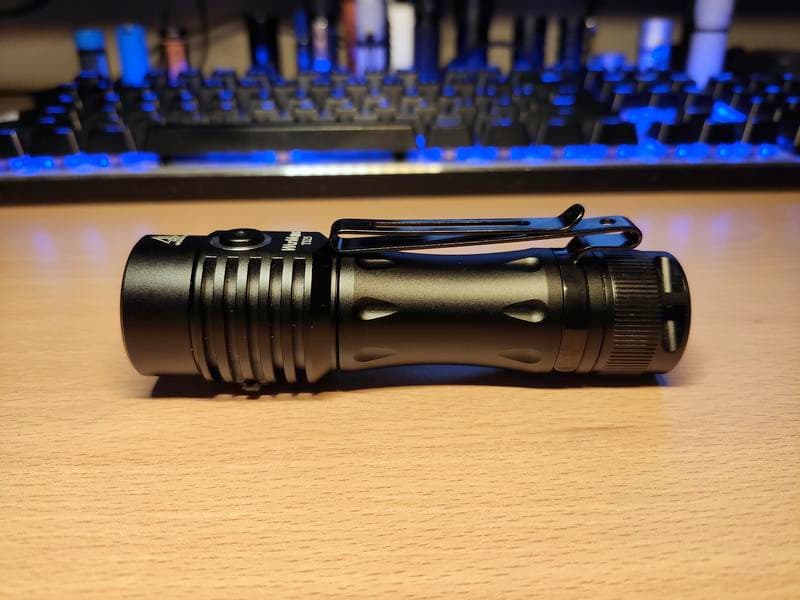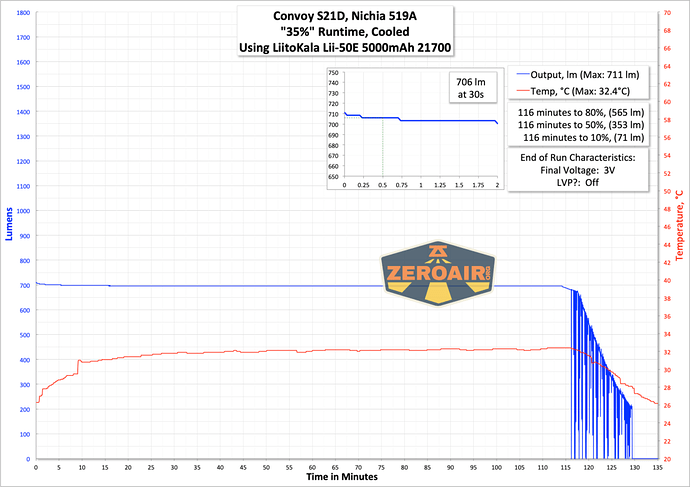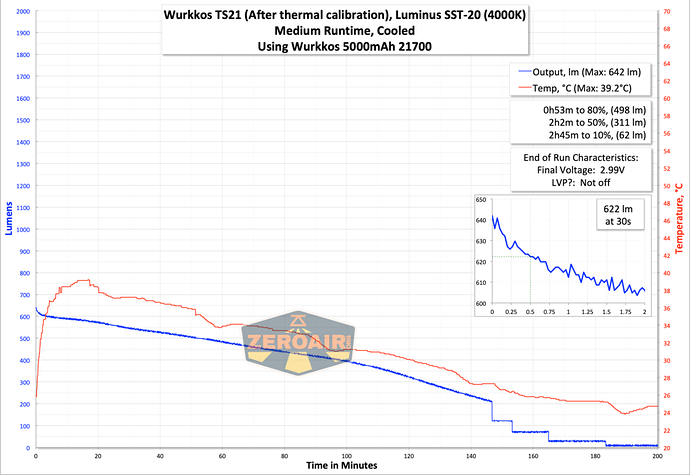The flashlight was sent to me by Wurkkos for review.
Here’s the product’s link for more info: Wurkkos TS25
The flashlight comes in a nice cardboard box.
The following accessories are included in the box.
- USB Type-C charging cable.
- Pocket clip
- Wurkkos branded 21700 battery, with 5000mA of capacity.
- Wrist lanyard.
- 2 x replacement o-rings.
- User manual.
The Wurkkos TS25 comes with satin black anodization.
It’s operated via an e-switch that’s mounted in the middle of the head.
The switch is backlit and will light up during charging to indicate the battery’s status.
Opposite to the e-switch, we find the charging interface of the light, which is sealed via a rubber flap.
A regular USB type-c plug is used.
And said previously, during the charge, the e-switch’s indicator will light up.
Looking at the front of the flashlight we can see a smooth bezel protecting the glass lens.
The TS25 uses a Quad TIR lens along with RGB aux LEDs.
I’ve went with the Nichia 519A 5000k option, but other LED variants are also available.
The head can be easily taken apart.
Here’s a closer look at the quad emitter + RGB board.
The soldering is very clean and the MCPCB is secured from twisting via 2 screws.
The tail of the light is completely flat, which of course allows it to tail stand.
The sides of the tail contain some parallel grooving to enhance the grip when user tries to tighten / untigthen it.
Additionally, it contains a hole for mounting a lanyard.
Both the head and tail threads are very cleanly cut and are anodized.
The anodization allows the user to mechanically lock out the light via slightly twisting either the head or tail.
The TS25 also comes with a detachable, dual way pocket clip.
Here’s a side shot of the flashlight with the pocket clip attached.
User Interface
The Wurkkos TS25 uses Anduril V2.0, which is one of my favourite flashlight firmwares.
Going through each and every detail of the firmware would take a few hours, so instead, here’s a little picture showcasing all the available actions of the firmware.
Output
Here’s my turbo output measurement and parasitic loss:
Turbo: 4045 lumen @turn-on, 19.4A of current draw.
Parasitic draw AUX Off: 0.068 - 0.120 mA
Parasitic draw AUX Low: 0.168 - 0.210 mA
Parasitic draw AUX High: 5.11mA
As you can see, Turbo is outputting some very serious output.
I recorded south of 4000 lumen of high CRI light at turn on.
Beamshots
Here’s some output beamshots.



And here’s a GIF of the different AUX colours (+ the main LEDs at lowest mode).


